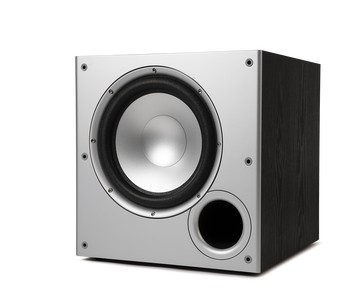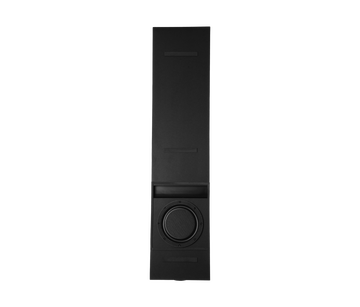How to Get the Best Bass in Home Theater and Music
Article written by POLK STAFF

The best subwoofers always bring that low-frequency thunder and dynamic richness, laying the foundation for an immersive home theater and music listening experience. Getting optimal results out of these speakers is about finding the right balance between power and clarity.
But first, you need to understand how subwoofers contribute to your audio system's overall sound and key ways to get the most out of them.
What is a subwoofer?
Subwoofers are loudspeakers specifically designed to handle sound's lowest frequencies, generally between 20 and 200 hertz in consumer systems. Though there is a wide variety of options on the market, these speakers-like others that are part of a traditional component speaker system-can be split into a few main categories.
Passive Subwoofer vs. Active Subwoofer
A passive subwoofer consists of a driver and enclosure, drawing its power from an external amplifier. If a subwoofer is active, that means it features built-in crossovers and amplifiers. Powered subwoofers draw their own electricity, reducing the load on the receiver.
How to choose a Subwoofer?
A number of other factors come into play when determining the volume and sound quality of subwoofers:
- The power, rated in terms of wattage, gives a sense of how loud the subwoofer is capable of playing.
- The driver size also affects volume, with larger drivers capable of making up for lower-powered amplifiers. Common sizes range from a 10- or 12-inch subwoofer up to 18-inch models.
- Front-firing subwoofers send sound straight forward, while down-firing subwoofers distribute bass more evenly.
- Enclosures may be sealed to maximize precision and power usage, but a vent or port allows greater output, wider dispersion and a deeper sound.
- The cones used to produce sound are made from many different materials, like treated paper, polypropylene, kevlar, copper and even aluminum.
Put the subwoofer bass in its place
While surround sound systems typically include either five or seven speakers situated around the area, most traditional home theater setups also have a single subwoofer helping to drive the sound. It's important to consider where to situate the subwoofer in the room, taking into account how it works with other speakers to deliver more complete and balanced sonic impact. Keep in mind that for medium-to-large rooms, your best bet may be to hook up a second subwoofer and distribute the bass more evenly.
The ideal subwoofer placement depends on the size and acoustic qualities of the room. Setting a subwoofer in the corner will maximize volume, but some listeners may find the results overly boomy. Moving the subwoofer to the front of the room, close to the main speakers, will improve the blending between higher and lower frequencies, but placing it too close may come with certain elements of unwanted resonance.
If you really want to find the perfect spot, throw on your favorite bass-heavy track and let bass luminaries Charles Mingus or Jaco Pastorius guide the way. Or, cue up your favorite movie scene where the action is undeniably thunderous. Start with the subwoofer in your preferred location for listening and then get low, moving around on your hands and knees until you find where the sound is clear, smooth and maintains a consistent volume. Chances are, that will be a great place for your subwoofer.
If you're passionate about the feeling and dynamics of sound, you must have a quality subwoofer thoughtfully positioned in your listening area.
Check out our Polk selection of subwoofers to discover which ones combine undeniable impact and performance that's right for you.











